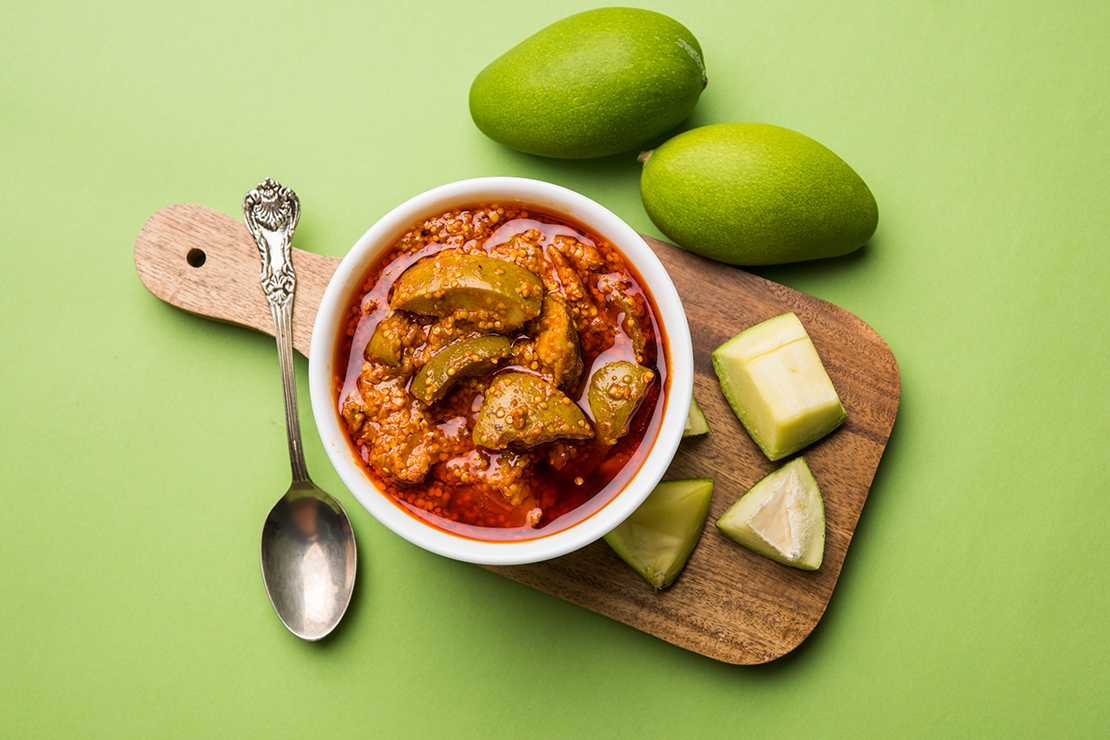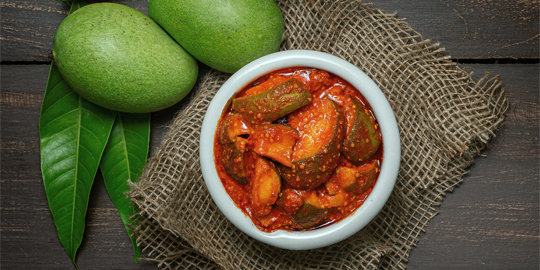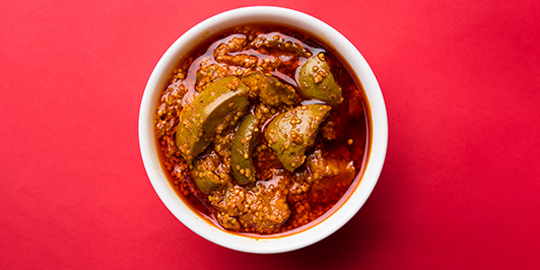Aam ka Achaar – Mango Pickle stands tall in Pakistan

Pickles have been around for centuries, with references to pickling being found as far back as 2400 BC in Mesopotamia. Pickled vegetables and fruits were used as an early form of food preservation and soon became popular in many cultures around the world. In Pakistan, mango pickle is one of the most beloved and popular condiments. The unique flavor of mango pickle has been enjoyed in the country for generations and is typically served with meals as a side dish or chutney.
Mangoes are native to South Asia and Pakistan is one of the world’s largest producers of mangoes. The country produces over two million tons of mangoes each year and is known for its delicious varieties, such as Chaunsa, Sindhri, Langra, and Anwar Ratol. The rich yellow fruit and its trees have a special place in Pakistani culture with many dubbing it the King of fruits. For centuries, the country has celebrated and honored the mango tree as a symbol of good luck and prosperity. From the Mango Festival in Multan to the annual mango-picking ceremonies, Pakistanis show their appreciation for this beloved fruit in many ways. Mangoes are also used in many traditional Pakistani dishes. The most popular is probably Aamras, which is a sweet dessert made with mangoes and milk. The fruit is also used in curries, salads, and pickles. The sweet and tangy flavor of mangoes adds a unique depth to many dishes.

The origins of mango pickle in Pakistan are unknown, but it is believed to have been around for centuries. The earliest known reference to mango pickles dates back to the 16th century when a recipe for mango pickles was included in the cookbook of Mughal Emperor Akbar. The pickle is made with fresh, ripe mangoes that are cut into small pieces and mixed with a variety of spices, such as cumin, mustard seed, fenugreek, red chili powder, turmeric, and salt. The mixture is then cooked in oil until it forms a thick paste.

Mango pickle has become an indispensable part of Pakistani cuisine, served at almost every meal. It is especially popular with rice dishes, such as Tehri and Pulao, and is often eaten with breads like naan or chapati. The pickle can also be used as an ingredient in other dishes, such as curries and salads.

This locally produced delicacy is a versatile condiment and can be used in a variety of dishes to add flavor and spice. It is also used as a marinade for meat, fish, and vegetables. The pickle can be made in different ways, depending on the region and personal preference. Some people like to add vinegar or sugar to the mix, while others prefer a spicier version. Mango pickle is an essential part of the Pakistani culture and cuisine, providing a unique flavor to food that can’t be found anywhere else. The sweet and spicy condiment is a favorite among locals and visitors alike, and it’s sure to bring a smile to anyone’s face.

Mangoes and mango trees are an integral part of Pakistani culture and cuisine. Their sweet flavor has been enjoyed for centuries, providing a unique taste that can’t be found anywhere else. From mango pickles to mango desserts, the versatile fruit can be used in a variety of dishes, and its importance to Pakistani culture cannot be denied. Whether it’s a symbol of luck and prosperity or the star ingredient in a delicious recipe, the mango is an essential part of Pakistani history. Mango pickle continues to be served at tables around the country, a reminder of the fruit’s symbolic and culinary importance and its place in the hearts of so many Pakistanis. You can now order National’s chatkharaydaar Mango Pickle in the easiest way possible. Just click here to start ordering and enjoy the delicious tanginess of the tastiest Mango Pickle in no time at all!
